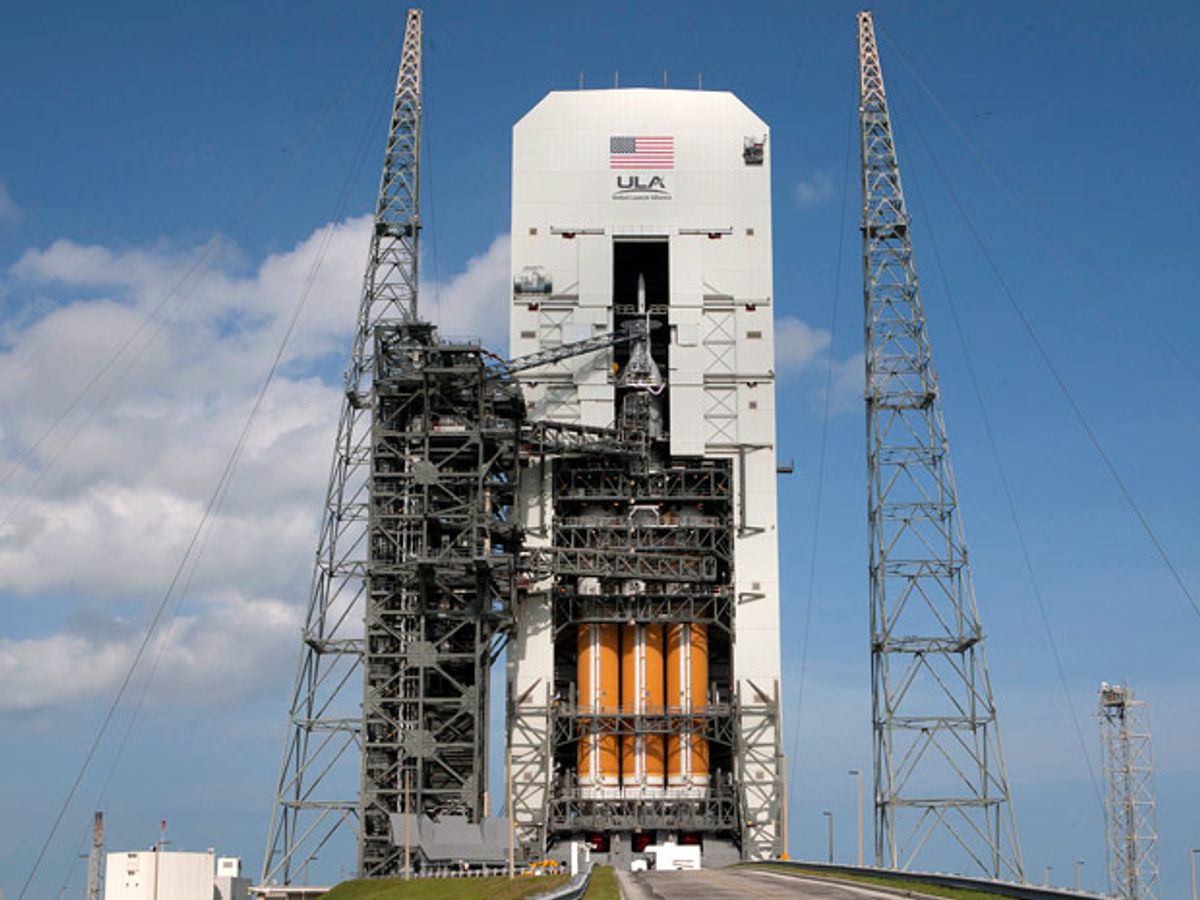Update 5 Dec 2015: 16:35 GMT The Orion spacecraft has successfully splashed down four hours and 24 minutes after launch at 16:29 GMT. NASA looks to offload flight data from the spacecraft’s many sensors before trucking it back to Florida, so that the space agency can begin analyzing the results in preparation for future test flights.
Update 5 Dec 2015: 16:11 GMT Orion launched on its first test flight at 12:05 GMT after being delayed from a planned launch on Thursday. The spacecraft successfully reached its planned peak altitude of 5,800 kilometers above Earth—about 15 times higher than the space station’s orbit—and is currently less than 10 minutes away from reentry.
Update 4 Dec 2014: 15:40 GMT NASA has aborted Thursday’s launch attempt after several delays involving windy conditions and valve problems on the Delta IV rocket. The next launch window is within 24 hours.
NASA’s next step toward sending astronauts to Mars is fast approaching with the first scheduled test flight of the Orion crew capsule on Thursday. The unmanned test flight aims to assess the spacecraft’s systems in the deep space radiation environment beyond low-Earth orbit and during reentry.
The U.S. space agency’s future heavy rocket, the Space Launch System, won’t be ready for flight tests carrying the Lockheed-made Orion exploration spacecraft until December 2017 at the earliest. Instead, Orion will hitch a ride aboard a Delta IV Heavy rocket during its scheduled mission this week with the official name Exploration Flight Test-1. Such a test will allow Orion to perform two looping orbits around the Earth and reach a high point of 5800 kilometers above the planet—a distance that will test the spacecraft systems’ resistance to deep space radiation.
“This is the first human-rated spacecraft that has gone beyond LEO [low Earth orbit] in 42 years by my count, so it’s a big deal to get beyond the Van Allen belts and get into that space environment,” said Michael Hawes, vice president and Orion program manager at Lockheed Martin, during a press conference held yesterday.
The computers aboard Orion are much more powerful than those carried by NASA’s Apollo moon missions during the 1960s and 1970s, said Mark Geyer, Orion program manager at NASA’s Johnson Space Center in Houston. But such advanced electronics could also be much more susceptible to the levels of radiation found in the Van Allen belts—charged particles from the solar wind and cosmic rays trapped by the Earth’s magnetic field.
The $370-million flight test should help NASA better understand whether Orion’s new computers can deal with the radiation of deep space environments during future missions to visit asteroids or Mars. “Radiation can cause a glitch in the data,” Geyer explained during the press conference. “The computers are smart enough to know if they have funny data, so they will reset.”
If all of Orion’s computers have to reset at the same time, the spacecraft also has a backup memory system to keep track of the current state of the vehicle, Geyer said.
Orion will also carry two battery-operated radiation monitors developed by NASA and the University of Houston. The radiation monitors will record radiation levels encountered by Orion during the 4.5-hour mission and allow the space agency to compare the onboard data with telemetry data after the crew capsule’s return.
The Orion flight test should allow the crew module to achieve a reentry velocity about 84 percent of what it would be during a return trip from the moon. The reentry speed of more than 30,000 kilometers per hour will push heat levels surrounding the crew module to almost 2204 degrees C—enough to give the new heat shield a workout.
NASA plans to have a flying drone ready to try taking video of the Orion capsule’s reentry and parachute deployment. Two U.S. Navy ships have already departed to stand ready for retrieval of Orion once the crew module splashes down in the Pacific Ocean.
If everything goes as planned with the launch, the space agency hopes to have trucked the capsule across the country back to the Kennedy Space Center in Florida before Christmas. The flight test results should prove useful in preparing for the next Orion test flight scheduled for 2018.
Jeremy Hsu has been working as a science and technology journalist in New York City since 2008. He has written on subjects as diverse as supercomputing and wearable electronics for IEEE Spectrum. When he’s not trying to wrap his head around the latest quantum computing news for Spectrum, he also contributes to a variety of publications such as Scientific American, Discover, Popular Science, and others. He is a graduate of New York University’s Science, Health & Environmental Reporting Program.



